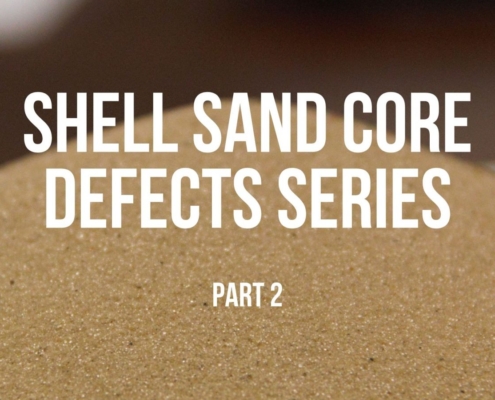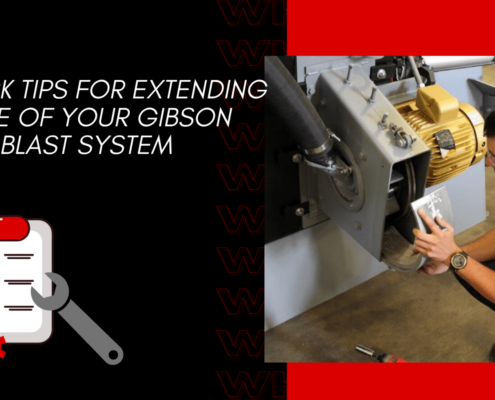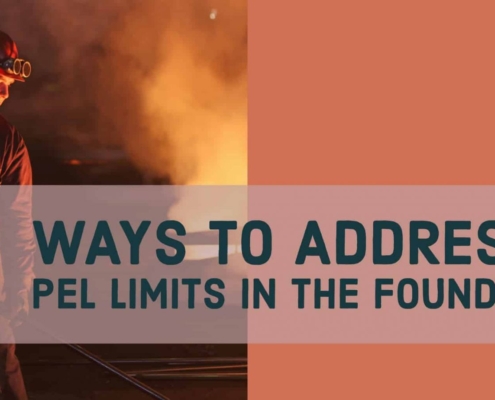 https://midvaleindustries.com/wp-content/uploads/2025/01/Copy-of-carbon-supply-chain.jpg
1260
2240
JBeasley
/wp-content/uploads/2024/06/Midvale-Logo-Web-Black.png
JBeasley2025-01-17 14:34:102025-07-03 09:12:24Strengthening Supply Chains: A Reliable Alternative for Foundry Carbon Amid Rising Tensions with China
https://midvaleindustries.com/wp-content/uploads/2025/01/Copy-of-carbon-supply-chain.jpg
1260
2240
JBeasley
/wp-content/uploads/2024/06/Midvale-Logo-Web-Black.png
JBeasley2025-01-17 14:34:102025-07-03 09:12:24Strengthening Supply Chains: A Reliable Alternative for Foundry Carbon Amid Rising Tensions with ChinaPart 1
In this two-part foundry series, we explore the most common shell sand core defects and provide probable causes to help eliminate them. If you run into these core defects, use this troubleshooting guide to check your system. Minimizing the amount of defects in the core room will boost overall production and save money on re-work costs.
Strongest:
- Normally a 3/8″ to 1/2″ thick. For thick wall castings, 3/4″ or greater
- Complete cure of the entire thickness. Golden brown in color
- Cold Tensile – 350 minimum. Ideal would be 350 to 500 tensile
- Good density – Blown tight
Weakest:
- Wall thickness below 3/8″
- Wall thickness under cured – yellow in color
- Cold tensile below 350
- Loose density – Not blown tight
When is a shell core at its strongest and weakest?
Core is over cured:
- Box temperature above 550 degrees
- Cure timers too long
- Low melt point of sand (below 205 degrees)
- Sand temperature too hot (above 90 degrees)
Core is under cured:
- Box temperature is below 450 degrees
- Cure timer is too short
- Melt point of sand is above 218 degrees
- Sand temperature is too cold (below 60 degrees)
Common Shell Core Curing Issues:
Core is showing uneven cure:
- Not enough burners (heat) to cover the configuration of the box
- Burners out (not working)
- Heat controls or sensors not working (either side of the box)
- Core in the box too long before removal
- Loose pieces colder than the rest of the box (move heat closer to loose pieces and mount extra burners)
- Mixture of low and high melt point sands (improperly blended)
Core surface is very dark but rest of core is under cured:
- Box temperature too high (above 550 degrees)
- Cure timers too short
Core Blowability Issues and Defects:
Core Has Poor Blowability:
- Wet Sand
- Water in air lines
- Cold Sand – Below 60 degress. As the sand warms up, moisture is created
- Low melt point – below 190 degrees. Sand sets up too quick, which slows the movement of the sand during blow cycle
- Core box too hot – Above 550 degrees. The hotter the box gets, the quicker the sand sets up as it is flowing in, which slows up the movement of the sand
- Blow valve malfunction – Proper air pressure not getting into sand box
- Water in air lines
- Cold Sand – Below 60 degress. As the sand warms up, moisture is created
Core Has Loose Blow or Poor Density:
- Sand low in sand box
- Vents plugged
- Low blow pressure
- Blow timer too short
- Lack of venting opposite of blow end
- Lack of vents at dead ends
- Parting line not tight (sand blowing out)
- Box too hot (above 550 degrees)
- Lack of seal between blow plate and sand box
- Blow valve blowing at wrong box position
- Lumps in sand box (gets in front of blow holes)
Core Has Swirl Marks:
This core defect is usually found on cores that have a large area between smaller areas. The large area would be 4 inches or greater in diameter. This defect can be caused by:
- Sand falling into the large area and beginning to set up before the remaining sand fills the area and the two sands do not knit together because of the different times the sand is in contact with the hot box. Filling the core box faster usually corrects the problem.
- Air that is trapped in the large area that has not pushed to vents opposite of blow area. As the sand was filling the large area and moving around, the excess air blends in with the sand giving the loose blow, swirl appearance. Usually putting vents in the box where the defect is found corrects the problem.
Are you experiencing defects with your shell cores?
Contact our team today to discuss your defects. Backed by years of expertise, our team can run trials to find the best process within your application.
Share This Post
More Like This
 https://midvaleindustries.com/wp-content/uploads/2025/01/Copy-of-carbon-supply-chain.jpg
1260
2240
JBeasley
/wp-content/uploads/2024/06/Midvale-Logo-Web-Black.png
JBeasley2025-01-17 14:34:102025-07-03 09:12:24Strengthening Supply Chains: A Reliable Alternative for Foundry Carbon Amid Rising Tensions with China
https://midvaleindustries.com/wp-content/uploads/2025/01/Copy-of-carbon-supply-chain.jpg
1260
2240
JBeasley
/wp-content/uploads/2024/06/Midvale-Logo-Web-Black.png
JBeasley2025-01-17 14:34:102025-07-03 09:12:24Strengthening Supply Chains: A Reliable Alternative for Foundry Carbon Amid Rising Tensions with China https://midvaleindustries.com/wp-content/uploads/2024/08/chemical-blog-2.jpg
900
1600
Nate Riggins
/wp-content/uploads/2024/06/Midvale-Logo-Web-Black.png
Nate Riggins2022-07-01 14:51:022025-07-03 09:12:28What You Need to Know About the 2022 Chemical Excise Tax
https://midvaleindustries.com/wp-content/uploads/2024/08/chemical-blog-2.jpg
900
1600
Nate Riggins
/wp-content/uploads/2024/06/Midvale-Logo-Web-Black.png
Nate Riggins2022-07-01 14:51:022025-07-03 09:12:28What You Need to Know About the 2022 Chemical Excise Tax https://midvaleindustries.com/wp-content/uploads/2024/08/Core-Defects-Series-part-2-4.jpg
900
1600
JBeasley
/wp-content/uploads/2024/06/Midvale-Logo-Web-Black.png
JBeasley2021-03-09 16:30:562025-07-03 09:12:30Sand Casting Core Defects Series – Part 2
https://midvaleindustries.com/wp-content/uploads/2024/08/Core-Defects-Series-part-2-4.jpg
900
1600
JBeasley
/wp-content/uploads/2024/06/Midvale-Logo-Web-Black.png
JBeasley2021-03-09 16:30:562025-07-03 09:12:30Sand Casting Core Defects Series – Part 2 https://midvaleindustries.com/wp-content/uploads/2024/08/cast-zinc-shot-header-2.png
900
1600
JBeasley
/wp-content/uploads/2024/06/Midvale-Logo-Web-Black.png
JBeasley2020-09-30 16:05:142025-07-03 09:12:32Cast Zinc Shot: Cost Saving Benefits for Shot Blasting
https://midvaleindustries.com/wp-content/uploads/2024/08/cast-zinc-shot-header-2.png
900
1600
JBeasley
/wp-content/uploads/2024/06/Midvale-Logo-Web-Black.png
JBeasley2020-09-30 16:05:142025-07-03 09:12:32Cast Zinc Shot: Cost Saving Benefits for Shot Blasting https://midvaleindustries.com/wp-content/uploads/2024/08/wheel-blast-blod-header-text-2.png
900
1600
Nate Riggins
/wp-content/uploads/2024/06/Midvale-Logo-Web-Black.png
Nate Riggins2020-08-14 14:43:402025-07-03 09:12:338 Quick Tips for Extending the Life of Your Gibson Wheel Blast System
https://midvaleindustries.com/wp-content/uploads/2024/08/wheel-blast-blod-header-text-2.png
900
1600
Nate Riggins
/wp-content/uploads/2024/06/Midvale-Logo-Web-Black.png
Nate Riggins2020-08-14 14:43:402025-07-03 09:12:338 Quick Tips for Extending the Life of Your Gibson Wheel Blast System https://midvaleindustries.com/wp-content/uploads/2024/08/Diamond-Grinding-Wheels-2.png
900
1600
Nate Riggins
/wp-content/uploads/2024/06/Midvale-Logo-Web-Black.png
Nate Riggins2020-08-12 15:33:492025-07-03 09:12:33Why Use Diamond Grinding Wheels in Your Cleaning Room?
https://midvaleindustries.com/wp-content/uploads/2024/08/Diamond-Grinding-Wheels-2.png
900
1600
Nate Riggins
/wp-content/uploads/2024/06/Midvale-Logo-Web-Black.png
Nate Riggins2020-08-12 15:33:492025-07-03 09:12:33Why Use Diamond Grinding Wheels in Your Cleaning Room?



